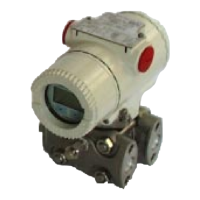6
2600T SERIES | PRESSURE TRANSMITTERS | OI/266/FF-EN REV. E
Proper disposal prevents negative effects on people and the
environment, and supports the reuse of valuable raw materials.
ABB can accept and dispose of returns for a fee.
Transport and storage
• After unpacking the pressure transmitter, check the device
for transport damage.
• Check the packaging material for accessories.
• During intermediate storage or transport, store the pressure
transmitter in the original packaging only.
For information on permissible ambient conditions for storage
and transport, see “Technical data”. Although there is no limit
on the duration of storage, the warranty conditions stipulated
on the order acknowledgment from the supplier still apply.
Safety information for electrical installation
Electrical connections may only be established by authorized
specialist personnel in accordance with the electrical circuit
diagrams. The electrical connection information in the manual
must be observed; otherwise, the applicable protection type
may be affected. Ground the measurement system according
to requirements.
Safety information for inspection and
maintenance
WARNING
There is no EMC protection or protection against accidental
contact when the housing cover is open. There are electric
circuits within the housing which are dangerous if touched.
Therefore, the auxiliary power must be switched off before
opening the housing cover.
WARNING
The device can be operated at high pressure and with
aggressive media. Any process media released may cause
severe injuries. Depressurize the pipeline/tank before
opening the transmitter connection.
Corrective maintenance work may only be performed by trained
personnel.
• Before removing the device, depressurize it and any adjacent
lines or containers.
• Check whether hazardous materials have been used as
materials to be measured before opening the device.
• Residual amounts of hazardous substances may still be
present in the device and could escape when the device is
opened.
• Within the scope of operator responsibility, check the
following as part of a regular inspection:
– Pressure-bearing walls/lining of the pressure device
– Measurement-related function
– Leak-tightness
– Wear (corrosion)

